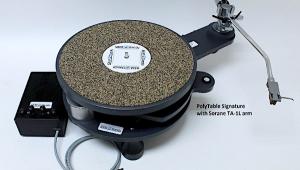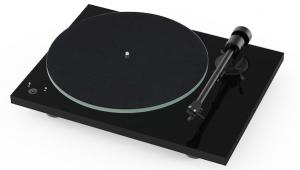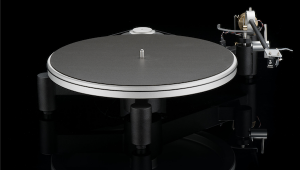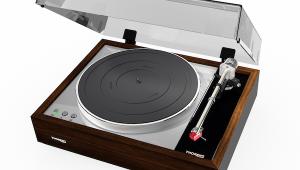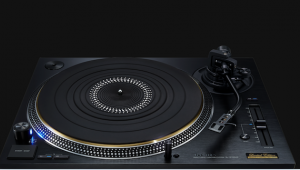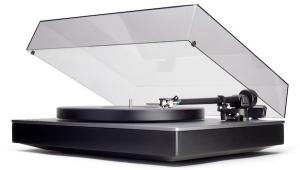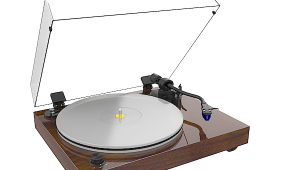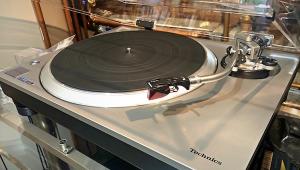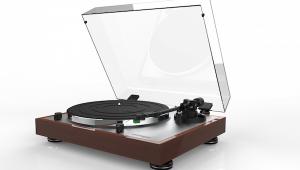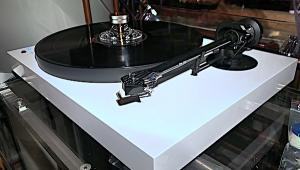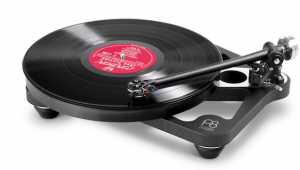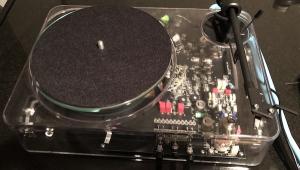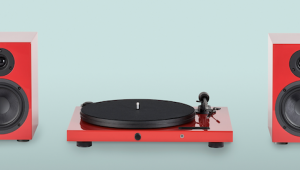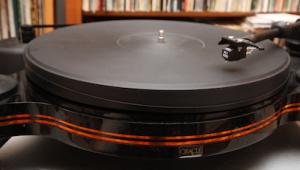Wilson Benesch Full Circle turntable, ACT 0.5 tonearm, & Ply MC cartridge
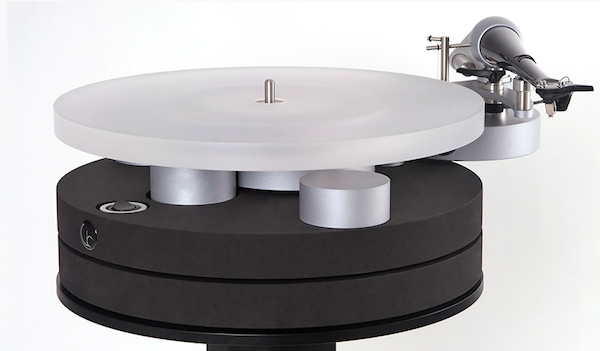 Fiction, of course. Nobody in their right mind would ask the government for money to start a turntable company. Craig Milnes and Andrew Scholey did, but that was in the UK, not in our own political and cultural environment. When they got the money (from the Department of Trade and Industry or DTI)—100,000 pounds sterling—they matched it with an equal amount of their own. Amazingly, it happened at the end of the last decade, when the CD had all but obliterated the LP.
Fiction, of course. Nobody in their right mind would ask the government for money to start a turntable company. Craig Milnes and Andrew Scholey did, but that was in the UK, not in our own political and cultural environment. When they got the money (from the Department of Trade and Industry or DTI)—100,000 pounds sterling—they matched it with an equal amount of their own. Amazingly, it happened at the end of the last decade, when the CD had all but obliterated the LP.
Milnes and Scholey got the money in part by impressing the DTI folks with their experience in both hi-tech materials and engineering, and in the then relatively new field of computer modeling. They named the company after their wives' maiden names, which the partners felt would roll off the tongue with greater ease than their own. (This lesson was lost on the owners of the Stanetsky, Schlossberg, Silverman Funeral Parlor in Brookline, Massachusetts, but that's another story from my "yoot'.")
Wilson Benesch quickly made a reputation for itself as one of the world's foremost manufacturers of analog playback gear, first with its innovative turntable, then with its unique—some said "impossible"—ACT One tonearm (now replaced by the 2.0). Both make use of composite carbon-fiber technology. (ACT stands for Advanced Composite Technology.)
Why use carbon-fiber laminate in place of metal? It's said to absorb resonant energy instead of passing it on, or reflecting it back, to other materials with which it comes into contact. According to W-B, carbon-fiber composite is extremely stiff—stronger than titanium, with only half the mass of aluminum. Of course, like any material, a carbon-fiber laminate does have a resonant frequency—a relatively high one, which W-B says can be more easily controlled with careful damping. The resonant frequency of such a composite depends on the amount and orientation of the carbon-fiber cloth material and the resins used to hold it in place.
The original W-B turntable uses a subchassis of honeycombed Nomex to which a carbon-fiber skin is laminated—much like the body of a racing car. That, combined with other sophisticated innovations, brings its price up to about $3300 (not including arm). The original 'table has garnered extremely positive reviews worldwide. Domestically, it is available only in combination with the $2995 ACT 2 arm for $6295.
Now W-B enters the "mid-budget" arena with the Circle turntable—a totally new, quite unique and compact design that sells for $1995 fitted with a Rega RB300 arm, or $2995 with W-B's new ACT 0.5 arm (the combination reviewed here).
Turntable sandwich, hold the Nomex
The Circle is one handsome, well-rounded feller. Unlike the original W-B 'table, there's not a straight line to be seen. Nor, unlike its more expensive brother, are there any conventional springs, though there is a suspension of sorts. The round base, about the same diameter as the platter, is a smoothly finished wafer of MDF on which is mounted a raised On/Off rocker switch and a 250rpm Premotec AC-synchronous motor, the latter housed in a structure tall enough to protrude through a hole in the next layer of MDF, which rests on the base via three elastomer feet.
Mounted on this MDF layer are three satiny aluminum discs—two large, one small—that surround a much larger central disc, into which is fitted the phosphor-bronze spindle bearing. This central disc is suspended from the second base via a pair of small-diameter, "unidirectional" carbon-fiber rods, creating a cantilevered leaf-spring–like structure. The aluminum arm-mounting platform is itself cantilevered off of the base via three more carbon-fiber tubes: two far thicker ones sustained by the bearing support disc, and a thinner one held by the smallest of the three surrounding aluminum discs, which is the disc closest to the armboard. Though both of these cantilevered structures are extremely stiff, they flex when pressed.
A round belt fitted to a two-step brass motor pulley drives a finely machined aluminum subplatter, which holds the tooled-steel spindle. The platter itself is a nicely machined piece of acrylic about an inch thick, and hollowed out under its center both to accommodate the subplatter, and to increase the flywheel effect by having the mass concentrated about its outer edge. A stiff felt mat is supplied.
The Circle is a magnificent piece of industrial design and precision machining, all of which is done in-house at Wilson Benesch. The end result is an extremely compact, graceful, and original product at a very affordable price.
They said it couldn't be done!
Circle purchasers opting for the ACT 0.5 tonearm will be benefiting greatly from all of the R&D that went into the design and manufacture of the original ACT 1.0 arm. While Milnes and Scholey were advised that it would be impossible to manufacture a one-piece, three-dimensional tapered armtube/headshell out of flat, resin-injected carbon fiber, they managed to do it. With that under their belts, they could experiment to find a way to make a more cost-efficient version.
To bring the ACT 0.5 in at half the price of the 2.0 ($1495 compared to $2995), W-B found a way to manufacture the tapered armtube with a slightly less complex construction, resulting in somewhat higher mass and somewhat lower torsional stiffness (about 15% higher mass and 15% lower stiffness, according to Milnes).
Another difference is the electrical connection. Ironically, to save money, the 0.5 uses a direct connection (with one solder joint) from the cartridge clips to the RCA jacks—a "purist" approach—while the 2.0 offers a detachable cable. Both use the same Cardas internal wire and Gotham interconnect cable, and both use the same high-quality, German-sourced turned cartridge clips. The 2.0's RCA plugs are by Neutrik; the 0.5's are not quite in the same league, but substantial nonetheless.


